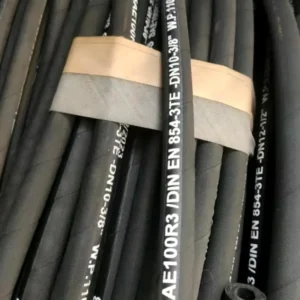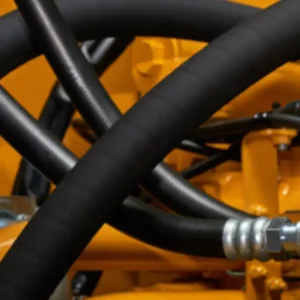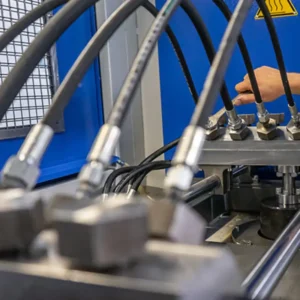There’s nothing more frustrating than getting ready to fire up your grill or propane heater, only to find you have low or no gas flow. We’ve all been there, wondering, “How do you unclog a propane hose?” While a true “clog” within the hose itself is actually quite rare, many issues can mimic a blockage.
In this comprehensive guide, we’ll walk you through our proven methods for diagnosing and resolving common propane flow problems, ensuring your appliances are running smoothly and safely again.
Understanding Propane Flow Issues
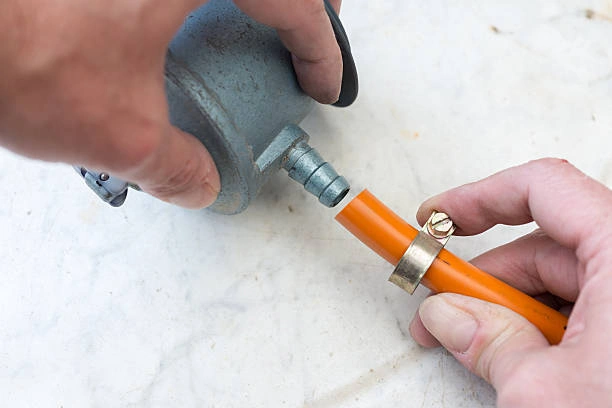
When our propane appliance isn’t getting gas, our first thought often jumps to a “clogged” hose. However, we’ve learned through experience that a true internal blockage in a propane hose is highly uncommon. Propane is a clean-burning fuel, and the pressure within the line typically prevents solid debris from accumulating inside the hose itself. More often, the problem lies elsewhere in the system, creating the illusion of a clog.
Common Misconceptions About “Clogs”
It’s easy to assume a solid obstruction, like dirt or rust, is blocking your propane hose. Yet, the design and pressure of propane systems make this unlikely. The gas flows under significant pressure, usually pushing any small particles through. The real culprits are typically external factors or safety features designed to prevent gas leaks, which can inadvertently restrict flow. Understanding this distinction is the first step toward effectively troubleshooting and resolving the problem.
Symptoms of Restricted Propane Flow
Before we dive into solutions, it’s helpful to recognize the signs that indicate a propane flow issue. We often encounter symptoms such as:
- Low flame or inconsistent flame: Your burner might light but produce only a small, weak flame, or it might flicker and go out.
- No ignition at all: The appliance simply won’t light, even after repeated attempts.
- Hissing sound without ignition: You might hear gas, but it doesn’t ignite, suggesting air or very low pressure.
- Appliance lights briefly, then goes out: This can indicate the propane system’s safety features kicking in due to low flow.
- Pilot light won’t stay lit: For appliances with pilot lights, this is a common indicator of insufficient gas supply.
Safety First: Essential Precautions Before You Begin
Whenever we’re dealing with propane, safety is our absolute top priority. Propane is highly flammable, and mishandling it can lead to dangerous situations. Before we even think about touching the hose or connections, we always take critical precautions. Skipping these steps could put you, your property, and others at serious risk. Never underestimate the importance of these initial safety measures.
Disconnecting Your Propane Tank Safely
The very first thing we do is ensure the propane tank valve is completely shut off. We turn the valve clockwise until it’s snug. Next, we carefully disconnect the hose from both the tank and the appliance. This ensures that no gas can flow through the system while we are inspecting or working on it. Even if you only suspect a minor issue, this step is non-negotiable for safety.
Working in a Well-Ventilated Area
Propane is heavier than air, so if there’s any leakage, it will settle in low areas. We always ensure we’re working outdoors or in a very well-ventilated space. This allows any residual gas to dissipate safely, minimizing the risk of buildup and potential ignition. Never attempt to troubleshoot propane issues in an enclosed space like a basement or garage without proper ventilation.
No Open Flames or Ignition Sources
This might seem obvious, but it’s worth reiterating. While working with propane lines, we ensure there are no open flames, sparks, or any potential ignition sources nearby. This includes cigarettes, lighters, matches, and even electrical devices that could produce a spark. Our focus is entirely on the task at hand, away from distractions that could lead to an accident.
Troubleshooting the Most Common Causes of Low or No Flow
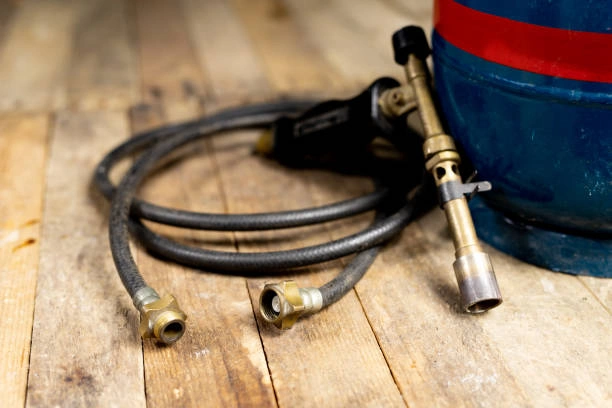
Once we’ve taken all the necessary safety precautions, we can begin troubleshooting. From our experience, the problem rarely lies in a physically clogged hose. Instead, issues with gas flow are almost always due to activation of safety features, insufficient tank pressure, or minor obstructions at the connection points. We tackle these most frequent culprits first, as they are often the quickest and easiest to resolve.
The OPD (Overfill Protection Device) – The Most Frequent Culprit
One of the most common reasons for low or no propane flow is the Overfill Protection Device (OPD) in your propane tank. This crucial safety feature prevents tanks from being overfilled, but it can also activate unexpectedly, restricting gas flow.
How the OPD Works
The OPD is designed to limit the flow of propane if it detects a sudden, large surge in demand or if the tank is opened too quickly. This is intended to prevent uncontrolled gas releases, but it often kicks in if you open the tank valve too fast, or if an appliance is left on when the tank is first opened. When activated, it significantly reduces or stops the flow of propane, mimicking a “clog.”
Resetting the OPD
If we suspect the OPD has been activated, here’s our simple reset procedure:
- Turn off all propane appliance valves (grill burners, furnace, etc.).
- Turn the propane tank valve completely OFF (clockwise).
- Wait 5-10 minutes. This allows the OPD to reset fully.
- Slowly open the propane tank valve, turning it counter-clockwise. Open it all the way but do so very gradually, taking about 5-10 seconds to open it fully. This slow opening is key to preventing the OPD from activating again.
- Now, turn on one appliance burner (e.g., on your grill) to its highest setting. Wait about 30 seconds for the gas to flow, then try to ignite it. It might take a couple of attempts to push any remaining air out of the line.
Checking Your Propane Tank Level
This might seem obvious, but we’ve often found ourselves scratching our heads only to realize the simplest answer was the correct one: the tank is empty! A low or empty tank will, of course, lead to no gas flow.
Why an Empty Tank Mimics a Clog
When your tank is nearly empty, the pressure inside drops significantly. This low pressure can mimic a clog, as there isn’t enough force to push the propane through the hose and into your appliance effectively. Always check your tank level before diving into more complex troubleshooting.
Weight vs. Gauge: Tips for Checking
- For smaller tanks (like 20lb grill tanks): The easiest way to check is to disconnect it and carefully lift it. If it feels very light, it’s likely empty or nearly empty. A full 20lb tank weighs about 37-40 lbs (20 lbs of propane + ~17-20 lbs for the tank).
- For larger tanks or if you want more precision: Use a propane tank gauge. These can be liquid level gauges (which float inside the tank) or pressure gauges (which measure vapor pressure). While pressure gauges aren’t perfectly accurate for liquid level, a very low reading indicates an empty tank.
Inspecting Regulator Functionality
The propane regulator is a crucial component that reduces the high pressure from the tank to a usable pressure for your appliances. If the regulator is faulty, it can severely restrict gas flow, again appearing like a clogged hose.
Signs of a Faulty Regulator
- Very low flames, even after resetting the OPD.
- Popping or humming noises coming from the regulator.
- Visible cracks or damage to the regulator itself.
- Gas smell near the regulator (in which case, shut off the tank immediately and call a professional).
Regulator Vent Holes
Most regulators have small vent holes that allow atmospheric pressure to help regulate the gas flow. We ensure these holes are clear of debris, dirt, or insect nests. A blocked vent hole can prevent the regulator from functioning correctly, leading to reduced gas flow. Gently clean them with a soft brush, but never poke anything into the vent hole, as this could damage the internal diaphragm.
Kinks and Bends in the Hose
The simplest physical obstruction can be the culprit. A severely kinked or bent hose can restrict gas flow just as effectively as an internal blockage.
Visual Inspection for Physical Obstructions
We always perform a thorough visual inspection of the entire length of the hose. Look for:
- Sharp bends or kinks: Especially where the hose connects to the tank or appliance, or if it’s been stored improperly.
- Heavy objects resting on the hose: Ensure nothing is crushing it.
- Twists or knots: Untwist and straighten the hose carefully.
Simply repositioning the hose to remove a kink can often resolve the “clog” instantly.
How Do You Unclog a Propane Hose
If you’ve checked the tank level, reset the pump head indicator, and checked for kinks, and the flow is still low or nonexistent, we’ll next check the hose fittings. Small debris, dirt, or even cobwebs can get stuck in the tiny holes in the fittings, creating a bottleneck similar to a clogged hose. This is where careful cleaning can be very helpful.
Gathering Your Cleaning Supplies
| Item | Purpose |
| Soft-Bristle Brush | Ideal for gently brushing away dirt and debris from threads and openings. An old toothbrush works well. |
| Small Pick/Wire | For carefully dislodging stubborn particles in small orifices. Be extremely cautious not to scratch or damage anything. A paperclip or fine wire is often sufficient. |
| Clean Cloths or Paper Towels | For wiping down surfaces and drying. |
| Compressed Air (Optional) | A can of compressed air (like for keyboards) can be useful for blowing out loose debris from orifices, but use it sparingly and carefully. Never use high-pressure industrial air. |
Disconnecting All Connections
As always, safety first! We completely shut off the propane tank valve and disconnected the hose from both the tank and the appliance. This ensures there’s no gas pressure in the line while we’re working on the connectors.
We also take this opportunity to visually inspect the hose itself for any signs of wear or damage that might necessitate replacement (see section below).
Visual Inspection of Connectors
Once disconnected, we closely examine the inlet and outlet ports of both the hose and the appliance. Look for:
- Dirt, dust, or sand: These are common culprits, especially if the hose has been dragged on the ground or stored uncovered.
- Spider webs or insect nests: Spiders often find their way into small openings and can build surprisingly resilient webs.
- Rust or corrosion: Particularly on older fittings, rust flakes can break off and block orifices.
- Damaged O-rings or seals: If these are cracked or missing, they can restrict flow or cause leaks.
Gentle Cleaning of Inlet/Outlet Ports
Using our soft-bristle brush, we gently brush away any visible dirt or debris from the threads and the openings of the connectors. For any stubborn particles inside the small orifices, we carefully use a small pick or fine wire. The key here is gentleness.
We avoid scratching the metal or forcing anything, as this could damage the critical sealing surfaces or the orifice itself. For standard BBQ hoses, the internal connection has a small “nipple” or valve; ensure this is clear and moves freely.
Using Compressed Air (Carefully!)
If we have a can of compressed air, we can use short, controlled bursts to blow out any loose debris from the orifices. Hold the can upright to prevent propellant from spraying out. Do not use a high-pressure air compressor, as this can damage sensitive internal components or seals. This step is optional but can be effective for removing particles you can’t reach with a brush.
Reconnecting and Testing
After cleaning, we carefully reconnect the hose to both the appliance and the propane tank, ensuring all connections are snug but not overtightened. Overtightening can damage the threads or internal seals.
Once connected, slowly open the propane tank valve. Then, use a leak detection spray (soapy water works too) on all connections. Look for bubbles, which indicate a leak. If no bubbles appear, try lighting your appliance. It might take a few attempts to push any residual air out of the line, but with a clear connection, gas should flow freely.
Best Practices for Hose Care
Proper Storage of Hoses: When not in use, we always disconnect our propane hoses and store them in a cool, dry place away from direct sunlight and extreme temperatures. We avoid coiling them too tightly or creating sharp kinks, which can stress the material.
Regular Inspections: Before each use, we make it a habit to quickly visually inspect the entire length of the hose and its connections for any signs of wear, cracks, bulges, or kinking. This quick check can catch minor issues before they become major problems.
Keeping Connectors Clean: After disconnecting, we often use a clean cloth to wipe down the connectors, removing any dust or debris before storage. This prevents buildup in the small orifices.
Protecting from Chemicals and Pests: We keep our hoses away from oil, grease, solvents, and corrosive chemicals that can degrade the material. We also try to store them in a way that minimizes exposure to insects that might build nests in the connections.
Avoiding Over-Tightening: When connecting the hose, we ensure it’s snug and leak-free, but we avoid overtightening. Excessive force can damage the threads on both the hose and the appliance, leading to leaks or future connection issues.
Conclusion
Dealing with an apparent “clog” in your propane hose can be frustrating, but as we’ve explored, the solution often lies in simple troubleshooting and preventative measures.
By understanding how your propane system works, performing regular inspections, and practicing basic precautions, you can ensure safe, efficient, and uninterrupted gas delivery for all your outdoor cooking and heating activities. Remember, if you have questions about propane safety or complex issues, always consult a qualified professional.

